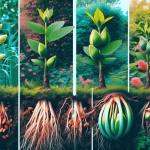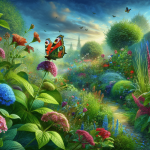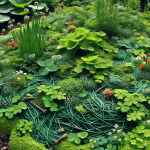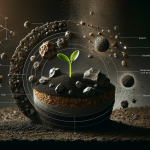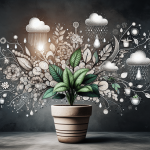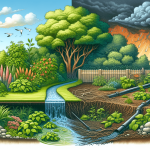This post may contain affiliate links. As an Amazon Associate, we may earn commissions from qualifying purchases.
Have you ever wondered how you can integrate aquaponics with your traditional gardening techniques to create a more sustainable and efficient food production system? Combining these two methods can result in a harmonious blend of ecosystems, offering the best of both worlds. Let’s explore this in greater detail.
Understanding Aquaponics and Traditional Gardening
What is Aquaponics?
Aquaponics is a method of growing plants and raising fish together in a symbiotic environment. In this system, fish waste provides an organic nutrient source for the plants, and the plants help to purify the water for the fish. It’s a closed-loop system that mimics nature, promoting sustainability and reducing waste.
What is Traditional Gardening?
Traditional gardening involves growing plants in soil, using organic or synthetic fertilizers, and often relying on natural irrigation methods, such as rain or hand watering. This method allows flexibility in plant choice and aesthetics, making it a preferred option for many home gardeners and agriculturalists.
The Advantages of Integrating Aquaponics with Traditional Gardening
Enhanced Sustainability
By combining both systems, you can create an ecosystem that maximizes resource use and minimizes waste. The closed-loop nature of aquaponics reduces the need for synthetic fertilizers, while traditional gardening provides the flexibility to grow a wide variety of plants.
Improved Plant Growth and Health
Aquaponics supplies a continuous flow of nutrients to the plants, which can lead to faster growth rates. When integrated with traditional gardening, plants benefit from the nutrient-rich aquaponics water and the stability of traditional soil systems, enhancing plant health and yields.
Water Efficiency
Aquaponics uses 90% less water than traditional farming due to its recirculating nature. By integrating it with traditional gardening, you can optimize water use through strategic placement of aquaponic systems to water adjacent soil-based gardens.
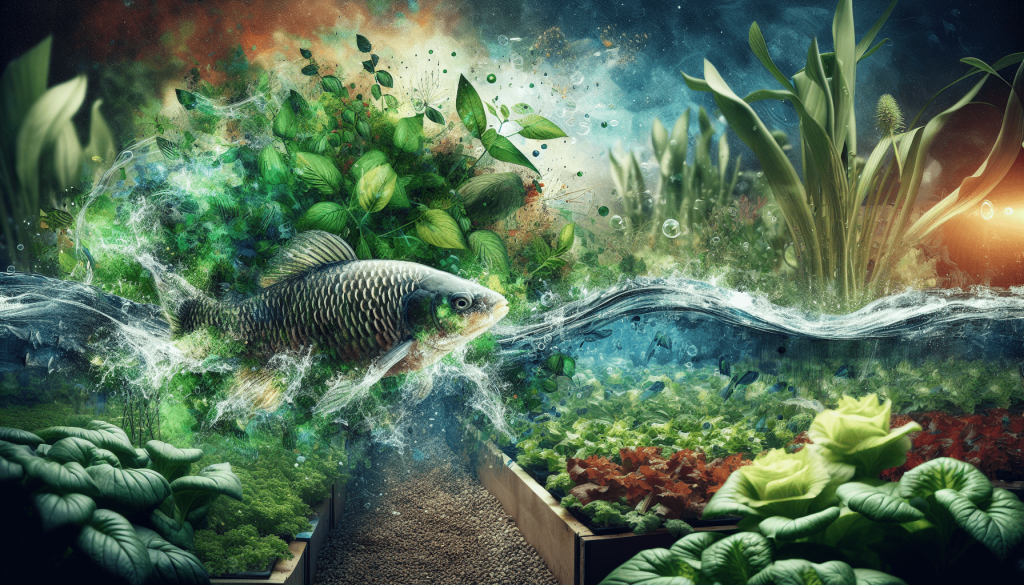
How to Integrate Aquaponics with Traditional Gardening
Setting Up Your Aquaponic System
To integrate aquaponics with traditional gardening, it’s essential to start by setting up a functional aquaponic system. You’ll need a fish tank, a grow bed, a pump, and suitable plumbing. The choice of fish and plants is crucial; tilapia and leafy greens like lettuce are popular choices due to their resilience and compatibility.
Choosing the Right Location
Consider sun exposure, water access, and proximity to your traditional garden. A semi-shaded area may provide the best conditions for both systems. Proximity matters for ease of transferring nutrient-rich water from the aquaponic system to your traditional garden plants.
Creating a Hybrid System
Combine aquaponic and traditional systems by utilizing aquaponic water to irrigate soil-based plants. The nutrient-rich aquaponic water can be directed to your soil garden, effectively reducing the need for additional fertilizers. You can use simple piping or a hose to transfer water from fish tanks to garden beds.
Selecting the Best Plants
Choose plants that thrive in both systems. Leafy greens, herbs, and certain types of fruiting plants like tomatoes and peppers adapt well to aquaponics and traditional soil conditions. The diversity in plant choice enhances ecosystem stability and biodiversity.
Monitoring and Maintaining Your Integrated System
Regular Testing
For an integrated system to thrive, regular testing of water quality is crucial. Check for pH levels, ammonia, nitrates, and nitrites to ensure your fish and plants are healthy. Similarly, monitor soil pH and moisture levels in traditional gardens to avoid nutrient imbalances.
Fish and Plant Health
Observe your fish for signs of stress or illness, such as erratic swimming or loss of appetite. Healthy fish produce waste that is vital for plant nutrition. Examine plants for signs of nutrient deficiencies or pests, and manage these issues promptly to sustain the system.
Seasonal Adjustments
Adjust the setup during seasonal changes to maintain efficiency. In colder climates, consider adding heaters for fish tanks or insulated covers. For traditional gardens, mulch helps retain soil moisture and regulates temperature variations.
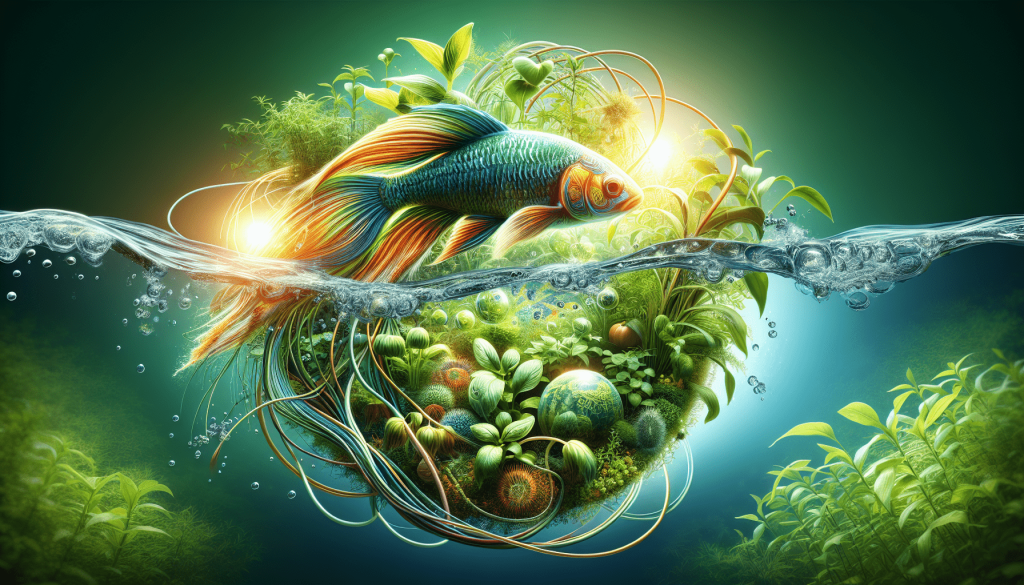
The Environmental Benefits of Integration
Reduction of Synthetic Inputs
Aquaponics drastically reduces the need for synthetic fertilizers by converting fish waste into plant nutrients. Integrating it with traditional gardening further decreases reliance on external inputs, thus promoting environmental health.
Biodiversity and Ecosystem Health
This integrated approach fosters biodiversity by incorporating a variety of plant species and fish. A diverse ecosystem is more resistant to pests and diseases, reducing the need for chemical interventions.
Carbon Footprint Reduction
By growing your own food through sustainable methods, you limit transportation emissions associated with store-bought produce. The recirculating nature of aquaponics and efficient water use in combined systems also contribute to lower carbon emissions.
Economic Considerations
Initial Investment and Costs
Setting up an aquaponic system involves initial costs for equipment such as tanks, pumps, and plumbing. However, combining it with traditional gardening can offset these costs through reduced expenditure on synthetic fertilizers, pesticides, and water.
Long-term Savings
An integrated system can lead to long-term savings by producing more yield per square foot compared to conventional gardens alone. It also extends the growing season with minimal additional costs, providing fresh produce for a greater part of the year.
Potential Revenue Streams
Home growers can turn their produce into a small business by selling surplus vegetables and fish. Offering organically grown produce appeals to health-conscious consumers and can create an additional income stream.
Challenges and Solutions
Technical Complexity
The complexity of managing two systems can be daunting. Mitigate this by starting small and expanding as you gain confidence. Utilize community resources, workshops, or online courses to enhance your skills.
Pest and Disease Management
An integrated system can introduce new pest and disease challenges. Use natural pest control methods like introducing beneficial insects or companion planting to maintain balance.
Balancing Nutrient Levels
Balancing nutrients in both systems can be tricky. Implement a gradual approach to integration, regularly testing and adjusting nutrient levels as necessary.
Real-life Examples and Case Studies
Success Stories
Several small-scale farmers and home gardeners have successfully integrated these systems, achieving higher yields and greater sustainability. Learning from their experiences can provide valuable insights into best practices and innovative techniques.
Lessons Learned
Common challenges faced in integrating these systems include maintaining water quality and managing the nutrient load. Reviewing case studies where adjustments made to system design or plant selection led to improvements can be beneficial.
Tools and Resources
Recommended Tools
Tools such as pH meters, water testing kits, and efficient pumps are critical for maintaining integrated systems. Reliable suppliers and local hardware stores can provide quality equipment tailored to your needs.
Online Resources
Websites, forums, and social media groups dedicated to aquaponics and gardening can offer support and ideas. Engaging with online communities allows sharing knowledge and seeking advice from seasoned enthusiasts.
Conclusion
The integration of aquaponics with traditional gardening is an exciting innovation in sustainable agriculture. By understanding and implementing key strategies, you can create a productive and eco-friendly garden that supports both plant and fish life. Though it involves a bit of learning and adaptation, the rewards of a thriving, integrated system can make it all worthwhile. You’re not just growing food, but cultivating a diverse and resilient small-scale ecosystem.

